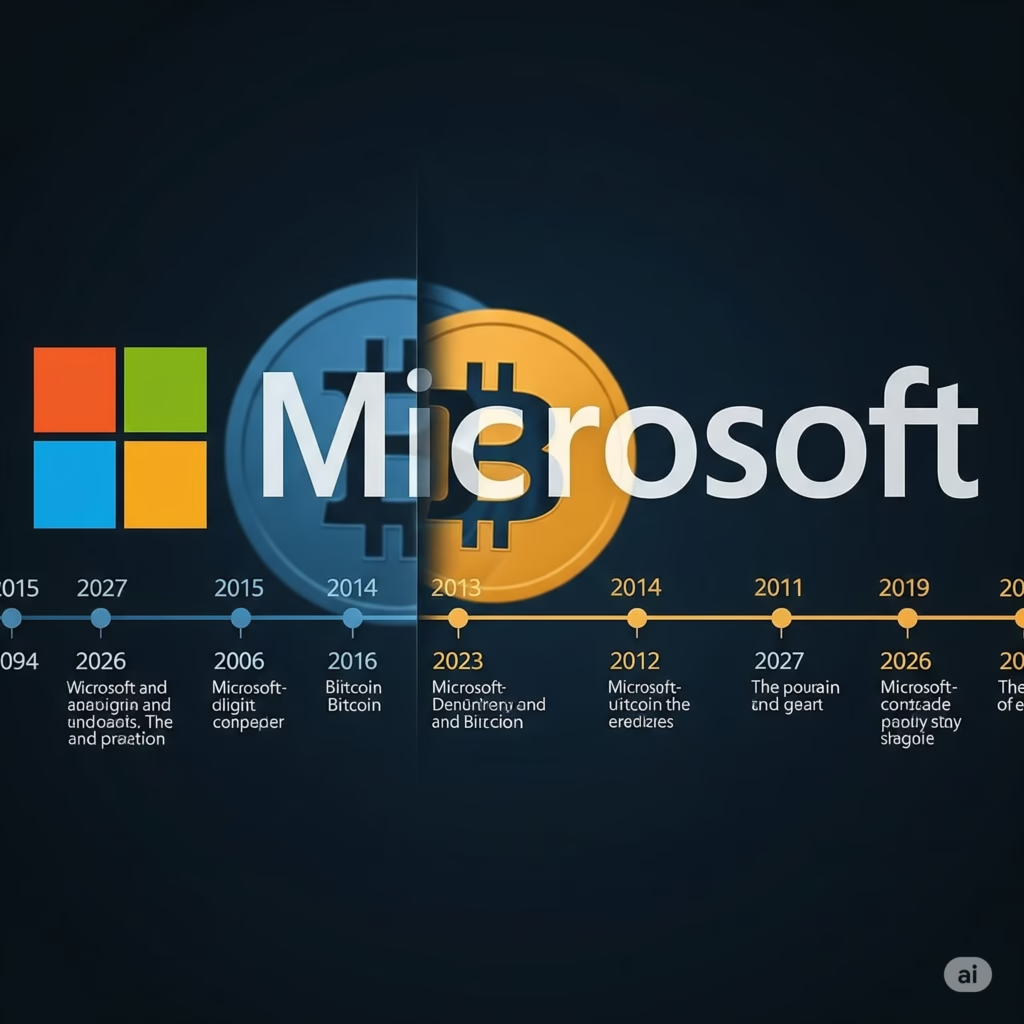
Table of Contents
1: What is MicroStrategy?
MicroStrategy is an American business intelligence (BI) firm known for developing software that enables companies to analyze internal and external data to make informed decisions. However, it rose to global fame in the crypto community for its unprecedented investment in Bitcoin.
Founded in 1989 by Michael J. Saylor and Sanju Bansal, MicroStrategy started as a pioneer in data analytics. Today, its name is synonymous with Bitcoin advocacy, especially under the vocal leadership of Saylor, who transitioned from CEO to Executive Chairman to focus on Bitcoin strategy.
2: A Brief History of MicroStrategy
- Founded: 1989
- Headquarters: Tysons Corner, Virginia, USA
- Founders: Michael Saylor and Sanju Bansal
- Public Listing: Nasdaq (MSTR) since 1998
MicroStrategy gained recognition in the 90s for innovative BI solutions and survived the dot-com crash. It consistently evolved its analytics platform and catered to Fortune 500 companies globally.
3: Business Intelligence Products
MicroStrategy offers:
- Data Analytics Software: Powerful dashboards and reporting tools
- Mobile BI Applications: For real-time business intelligence on smartphones
- HyperIntelligence: Embeds insights directly into websites and apps
Despite these, it’s the company’s Bitcoin acquisition that has overshadowed its core business in recent years.
MicroStrategy’s official product page
4: Why Did MicroStrategy Buy Bitcoin?
Expert Quote:
“Bitcoin is a dependable store of value and an attractive investment asset with more long-term appreciation potential than holding cash.” — Michael Saylor, Executive Chairman
In August 2020, MicroStrategy made headlines by converting its treasury assets into Bitcoin, citing concerns over fiat currency devaluation and inflation. Since then, it has:
- Acquired over 200,000 BTC (as of 2025)
- Issued convertible debt to buy more Bitcoin
- Made Bitcoin its primary reserve asset

5: How Much Bitcoin Does MicroStrategy Hold?
As of May 2025:
- Bitcoin Holdings: Over 214,000 BTC
- Estimated Value: $15+ billion (subject to market volatility)
- Average Purchase Price: ~$33,000 per BTC
Real-time BTC balance at bitcointreasuries.net
6: Impact on the Market
MicroStrategy’s Bitcoin adoption catalyzed a wave of institutional interest. Other companies like Tesla, Square, and Coinbase followed suit after seeing the media attention and stock price appreciation MicroStrategy enjoyed.
Search Engine Question: What impact did MicroStrategy have on Bitcoin’s mainstream adoption?
Answer: MicroStrategy’s public commitment to Bitcoin legitimized it as a corporate treasury asset. It inspired both retail and institutional investors to consider BTC a hedge against inflation and a long-term investment.
7: Criticism and Risk Factors
- Volatility Exposure: Bitcoin’s price swings affect MicroStrategy’s balance sheet.
- Debt Financing: Critics argue that borrowing to buy BTC is risky.
- Overconcentration: More than 90% of its reserves are in a single asset.
Expert Opinion: Financial analyst Lyn Alden has noted that while MicroStrategy’s Bitcoin strategy is bold, it turns a software company into a quasi-ETF for BTC.
8: Regulatory and Accounting Challenges
MicroStrategy also faces:
- GAAP accounting rules requiring BTC to be reported at impaired value
- Regulatory scrutiny in various jurisdictions
SEC guidance on digital asset reporting
9: Future of MicroStrategy and Bitcoin
With Michael Saylor at the helm of Bitcoin strategy and the company continuing to acquire more BTC, MicroStrategy is doubling down on its belief that Bitcoin is the future of finance.
Search Engine Question: Is MicroStrategy still buying Bitcoin in 2025?
Answer: Yes. The company has signaled plans to continue acquiring Bitcoin through corporate profits, loans, and equity offerings.

10: What is MicroStrategy’s Legacy?
MicroStrategy has redefined the role of a corporate balance sheet in the digital age. While originally known for enterprise analytics, it is now a symbol of corporate Bitcoin advocacy. Whether this bet pays off will depend on Bitcoin’s long-term success.
What Does This Mean for MicroStrategy?
Nasdaq’s annual reshuffle places MicroStrategy as the 40th largest company in the index, with a weightage of approximately 0.47%. The Nasdaq-100 comprises the largest non-financial firms on the exchange, such as Apple, Nvidia, and Tesla. This move introduces Bitcoin-backed investments into a widely tracked index, further solidifying cryptocurrency’s mainstream adoption.
With this inclusion, MicroStrategy becomes part of Invesco’s QQQ Trust ETF (QQQ), managing over $300 billion in assets. ETFs like QQQ, which track the Nasdaq-100, attract billions in passive investment flows. The company also brings significant Bitcoin exposure, holding approximately $42 billion worth of BTC.
A New Era for Bitcoin and Traditional Investments
MicroStrategy’s entry highlights the growing interplay between traditional finance and cryptocurrency. The Nasdaq announcement coincided with a Bitcoin price surge to $102,000, reflecting market enthusiasm. Analysts believe this inclusion creates a flywheel effect, driving demand for MicroStrategy’s stock while adding Bitcoin exposure to millions of portfolios.
Potential Challenges Ahead
Despite the excitement, analysts caution that MicroStrategy’s position may be reclassified as a financial firm by March due to its focus on Bitcoin holdings rather than operational business activities. Founder Michael Saylor has also stated his vision of transforming the company into a “Bitcoin bank.”
A Broader Market Impact
This move pressures competitors like the SPDR S&P 500 Trust ETF (SPY), the world’s largest ETF, to consider including MicroStrategy in the future. With $650 billion in assets, SPY’s adoption of MicroStrategy could further propel Bitcoin-linked stocks into traditional portfolios.
How to Invest in Bitcoin Safely



